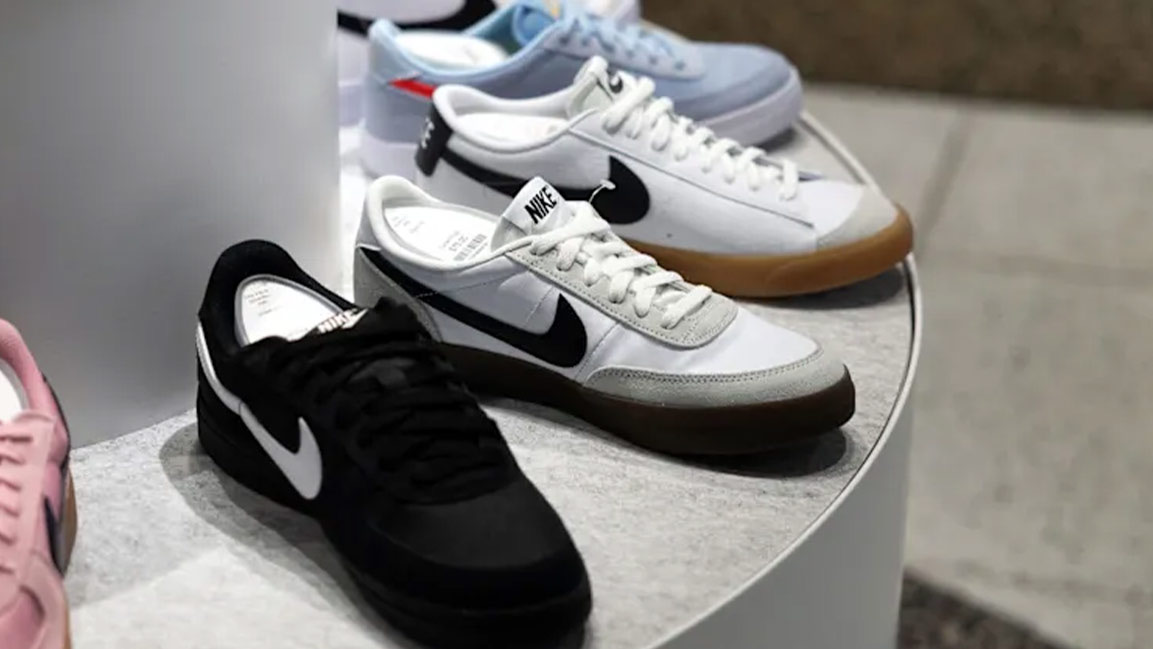- | 10:00 am
Gorden Wagener, Mercedes-Benz’s chief design officer, on balancing beauty and intelligence
Electric or combustion, Mercedes keeps its signature style while adapting to new engineering realities and shifting expectations

For too long, design was treated as a luxury, a purely decorative flourish on a product. That time is gone.
Today, design decides who gets noticed, coveted, and left behind. In automobiles, every curve, surface, and detail matters. It is emotional, functional, and strategic, shaping not just a car, but a brand, a legacy, and sometimes the future of mobility.
In a wide-ranging conversation, Gorden Wagener, Chief Design Officer at Mercedes-Benz, explains how emotion and intelligence guide the brand’s design philosophy, the challenges of electrification, and why AI can accelerate ideation but never replace human creativity.
REDEFINING AUTOMOTIVE DESIGN
For Wagener, inspiration is everywhere. Travel, he says, keeps his perspective sharp. Moving between Asia, the U.S., and other parts of the world offers fresh ideas that would be impossible to find by staying in Stuttgart and looking at the same car every day.
Ventures outside the car industry also fuel his creativity.
Architectural collaborations with Dubai’s Binghatti Group, projects in Miami, and upcoming super-luxury designs for the Monaco Yacht Show present new challenges and push his team into uncharted territory. “And as it’s Monaco,” he laughs, “you can imagine the level of detail.”
Creativity, Wagener believes, is less a natural gift than a trained skill. He often explains it through everyday objects: where most people see a coffee cup, he notices the form, the material, and the proportion. That sensitivity, he argues, can be learned. “Creative work rewires the brain differently,” he says, which is why designers see the world in ways others might not.
HUMAN INTUITION AND MACHINE INTELLIGENCE
Even as technology reshapes every part of the design process, Gorden Wagener believes design remains firmly rooted in human intuition. Attraction, he explains, is immediate and emotional, while respect is a more rational response. “It always comes from the human. The beauty aspect of our philosophy is human-centered,” he says. “Attraction is intuitive; you see something, and you just know. Respect, on the other hand, is a rational response. You look at a design and think, that feels modern because I haven’t seen it before.”
User experience, in his view, must strike a balance between sophistication and simplicity. Systems should be so functional and intuitive, he adds, that even someone with little technical knowledge could navigate them. “We make it as functional and intuitive as possible, so much so that even my mother-in-law, who cannot operate a smartphone, could use it.”
The idea of a signature style has guided his approach from the start. Each luxury brand, he argues, deserves a design language that is instantly recognizable and inseparable from the brand itself. Chanel and Apple are his touchstones: Coco Chanel and Steve Jobs created enduring identities that their successors refined but never abandoned.
New technologies, including artificial intelligence, are part of the process but remain limited in their capabilities. Mercedes-Benz established an AI squad three years ago to explore its potential. Wagener sees its value in generating early ideas but insists it cannot replace human judgment. “AI generates a large number of options, but 99 percent of them are unusable,” he says. “At best, it helps with early ideation, which accounts for about 10 percent of the process.” Some tools, like Tencent’s sketch-to-3D model software, offer promise, yet for Wagener, “when it comes to true creativity, beauty, and meaning, the human touch remains in control.”
While fashion itself moves too quickly to directly influence automotive design, changing each season, cars take three to five years to develop and remain on the market for around seven years. The two worlds occasionally overlap. “There can be some crossover in terms of materials. We also have designers with fashion backgrounds in our color and trim department.”
When Wagener became Chief Design Officer in 2008, Mercedes was already more than a century old. His challenge was to honor the brand’s heritage while steering it into the future. The answer, he says, lies in duality: “We asked ourselves, what does Mercedes stand for? Two poles emerged: emotional and rational. Heart and brain. Beauty and intelligence. That duality is deeply human and has always defined the brand.”
Despite years of experience, the thrill of seeing a new car take shape never fades. He admits his favorite design is always the one he is working on at the moment. “It is the light of the day. I have known it for five years already. Currently, we are developing a program that will shape the next decade.”
Before those designs hit the streets, they are refined under deliberately harsh conditions. Cars are first revealed in neutral presentation halls where every flaw is exposed. “The cars look their worst in that environment,” Wagener explains. “This is where we optimize them, because when they look good there, they look much better elsewhere, especially outside in nice sunlight.” The real reward, he adds, is seeing them out in the world: “It is always nice to see the cars on the street and think, it is coming out nicely.”
THE HUMAN ELEMENT
Even as technology reshapes every aspect of automotive design, the human touch remains central to the Mercedes-Benz brand. Emotion and a sense of “home” are embedded in every curve, surface, and interface, ensuring that luxury is felt as much as it is seen.
Wagener draws a clear line between a Mercedes and what he calls “rolling appliances.” “With a Mercedes, you have a love affair,” he says. Cars that exist simply to move people from one place to another may offer good value, but, in his view, they lack passion. “It’s more of a rational decision, like, ‘I need a good fridge, I need a good washing machine, maybe I need a good TV.’ For me, that’s the difference between luxury and mainstream. Luxury is something you buy out of passion, but it’s also a wise investment. Look at the G-Class, for instance.”
This emotional dimension extends to every detail, from the exterior lines to the interior experience. Wagener points to the new GLC as an example, saying it radiates a level of luxury that sets a new benchmark for the brand.
At the core of Mercedes’ philosophy is the balance between emotion and respect. “Strategically, we balance opposites. We have love and respect, central purity, heart, and brain. In the past, we placed a strong emphasis on love and sexy cars, and we were very successful. But we want to put a bit more emphasis on respect because that’s something someone who buys a Mercedes wants to demonstrate. They’ve achieved something in life, and they deserve respect for that. That’s the essence of Mercedes without forgetting love, beauty, and elegance. Whatever we do always feels beautiful. We never do awkward things.”
Even the most technical innovations are designed to create an immediate impact. “It’s amazing what we have done there. This is literally an aluminum plane with a chrome frame and an LED wall. When you see that car in nice sunlight, it’s amazing. Some breakthroughs happen unexpectedly. Sometimes, the good things happen fast.”
The result, Wagener insists, is a car that stands out in a sea of sameness while remaining unmistakably Mercedes. “When you look at the GLC, it’s still a super clean car. It’s like a human body, perfect and sporty. We never put fancy lines like some competitors do just to appear progressive. We don’t need that. It’s a Mercedes. You don’t need gimmicky stuff.”
He recalls how Bruno Sacco, the longtime head of styling at Daimler-Benz AG, dismissed such flourishes as “sneak snack.” Wagener appreciates the term but makes clear, “I don’t want ‘sneak snack.’”
THE CHALLENGES, THE POSSIBILITIES
The shift from combustion engines to electric drivetrains has changed engineering, but Wagener insists that the philosophy guiding Mercedes’ design remains steady. “We don’t emphasize purposefully highlighting electric driving. We don’t care what the powertrain is. The car will always be a Mercedes. It will carry that iconic grille. The grille will look slightly different on electric cars compared to combustion cars because combustion cars need more air, and electric cars don’t. We can turn it into a wall. There are slight differences, but the focus is the brand identity and everything the brand stands for.”
Designing around the battery creates its own set of challenges. “With electric cars, you have to store a battery underneath, which makes the car taller. That is never ideal. You must balance it with larger wheels to maintain the correct wheel-to-body relation. So, compared to its combustion counterpart, every electric car appears larger and more substantial. That is not bad for Mercedes, as it gives presence. Look at the GLC, it has a good presence. You just have to make sure it is not fat. That is really the only challenge from a design and study perspective.”
Wagener notes that interior design also shifts with the battery layout. “In electric cars, you are sitting on top of a battery, so the hip angle is not as good. That is why you have to move the hip point up, then raise the roof, and the whole vehicle becomes taller. That is not ideal,” he says. “In SUVs, that is not really a problem, but with lower cars, it becomes more of a challenge. Still, if you look at the market, about 55 percent of vehicles are already SUVs, and that number is still growing.”
CONCEPT CARS AND FAVORITES
“For my favorite production car, I would pick the GT. It is still one of my big favorites. My first project was the SLR, followed by the SLS, and then the GT. We have worked on cars like the Project One, so I have worked on everything. I am particularly fond of the G Generation One, the transition model,” says Wagener.
For him, concept cars are more than experiments. They are living expressions of imagination and precision, the purest reflection of the brand’s philosophy, where creativity meets reality in its most striking form.
THE BIGGEST DESIGN RISKS
When it comes to bold, creative leaps, Wagener points to the EQ generation as the clearest example. “The first EQ generation was so progressive, so different. It was a very brave move. We did not want to make an electric S-Class simply. We wanted to create something that felt futuristic, almost like a UFO on wheels.”
He stresses that risk is never taken for its own sake. “A big risk for us would be designing something so different that it stops being appealing, and we do not go there. Our philosophy is always anchored in beauty and strategy. Sometimes the risk is more about inventing a new type of car.”
For Wagener, the EQ cars remain the boldest risk to date, setting a clear direction for the brand’s future.
THE G-CLASS CABRIO AND BABY G
Few projects spark as much enthusiasm for Wagener as the G-Class Cabriolet. The design, he explains, is nearly complete and has already entered the tooling phase, bringing it close to production readiness.
He admires the G-Wagon, calling it a timeless piece of design with “perfect proportions and a strong interior.” Transforming it into a cabriolet, he adds, was less about reinvention and more about ensuring the open roof felt natural while preserving the car’s iconic character.
The Baby G, meanwhile, represents another milestone. Wagener describes it as “cool and definitely happening,” confident that only Mercedes could deliver it in a way that feels authentic. He believes it is set to become a major success and hints at the possibility of it being fully electric.
MERCEDES IN 2040
The long view doesn’t abandon first principles. “2040 isn’t far,” Wagener says. Cars already in development will be on the road then. Classic proportions still prevail: a long hood, a strong grille, and a rear-drive stance.
He emphasizes that timeless ideals of beauty will continue to guide the brand. Autonomy will reshape city mobility; some vehicles may look like public transport on virtual tracks. However, the desire for the special and the personal endures. “Beauty ideals don’t change much,” he says. “Mass trends come and go. There will always be room for individual expression.”







































